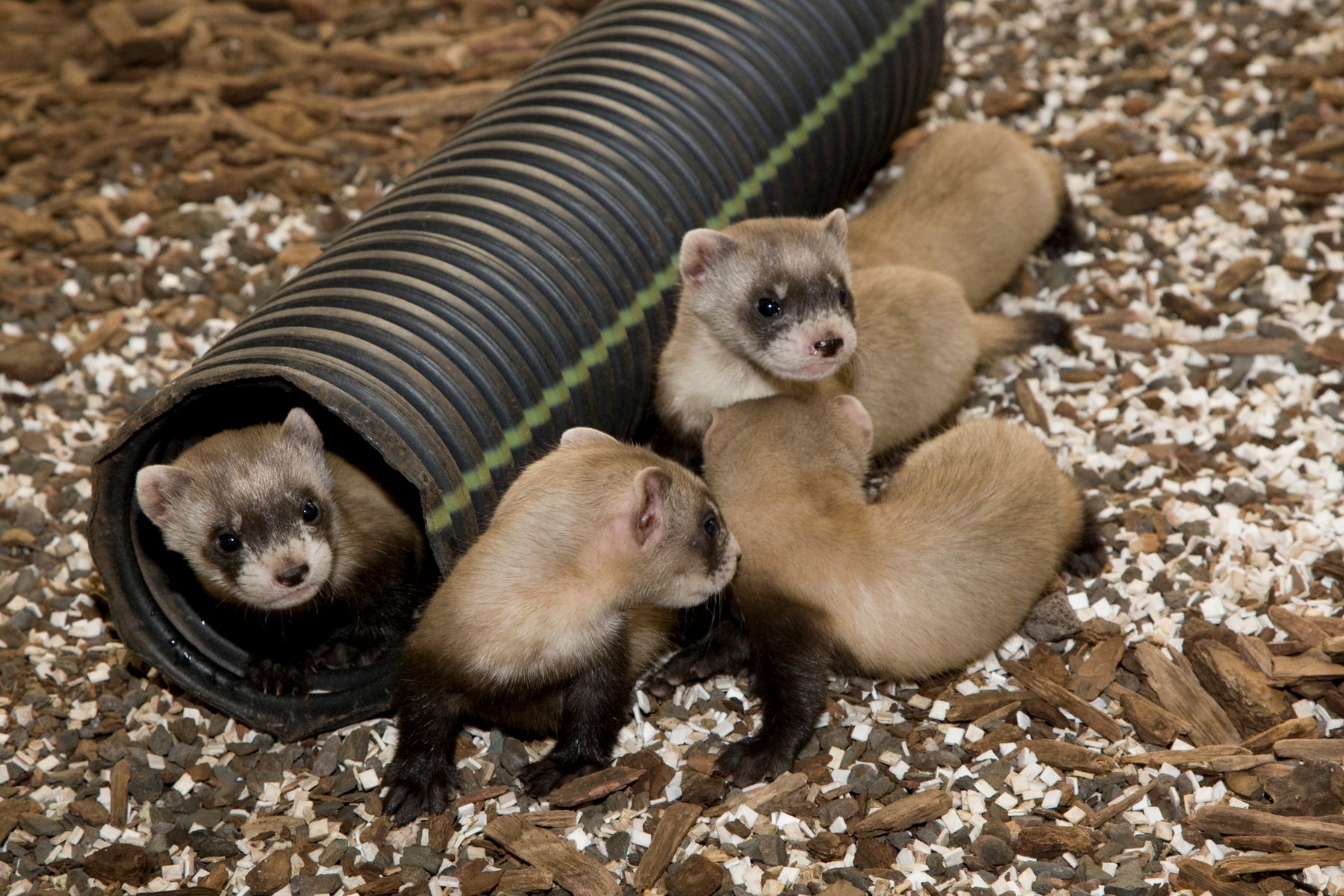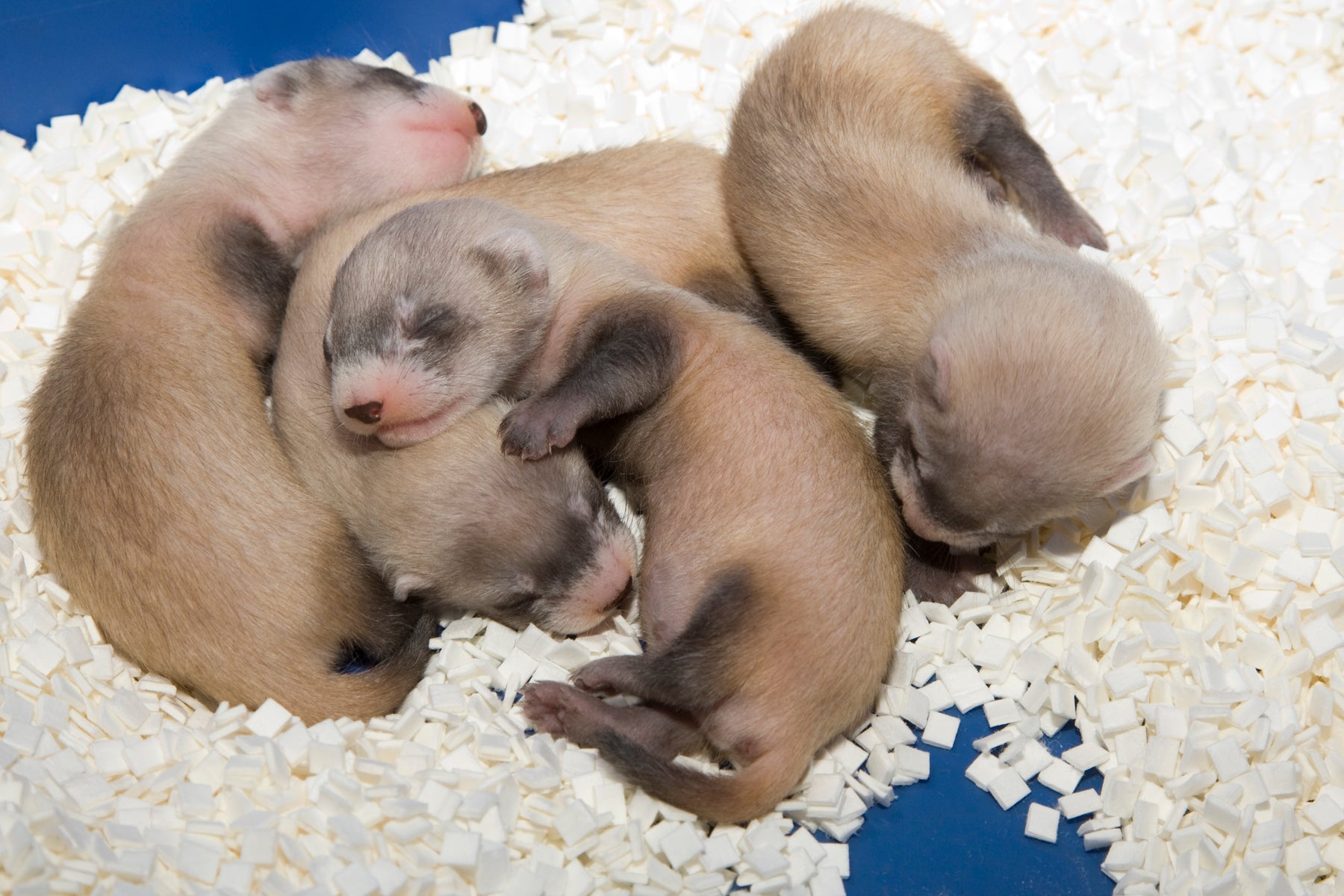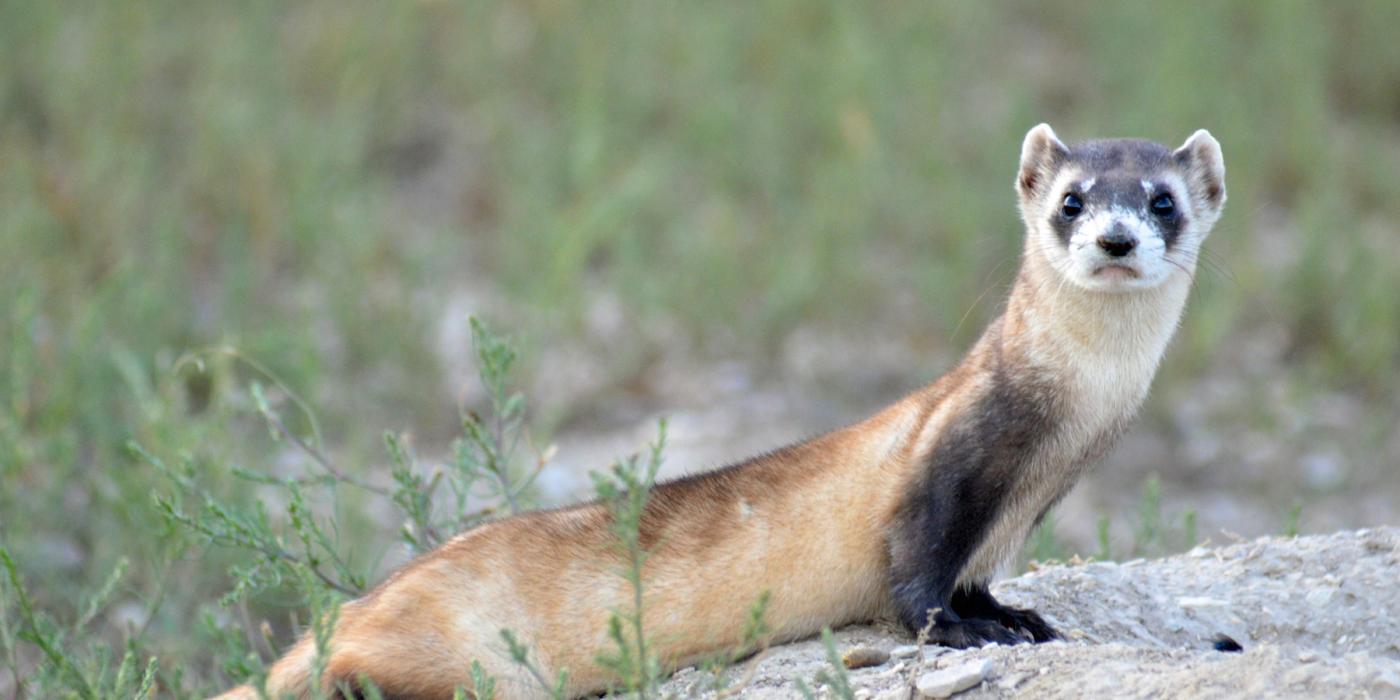Black-Footed Ferrets: Top Milestones for a Species Once Presumed Extinct
Black-footed ferrets, North America’s only native ferret species, were thought to have gone extinct in 1979. On Sept. 26, 1981, a black-footed ferret was discovered on the Wyoming prairie. From that unlikely occurrence, an entire species began its comeback — one of the most remarkable conservation stories on Earth. In honor of the 40th anniversary of the discovery of the last black-footed ferret colony, here are five of this miraculous species’ momentous conservation milestones.

1. Discovery of a Lost Species
In 1967, black-footed ferrets were classified as endangered. By 1974, they had apparently vanished from the wild, and by 1980 the last black-footed ferrets in human care died, leaving the species extinct. In 1981, a ranch dog in Meeteetse, Wyoming named Shep brought home an animal his owners, John and Lucille Hogg, didn’t recognize. Taking it to the local taxidermist, they discovered it was a black-footed ferret! Excited wildlife biologists searched the surrounding area for prairie dogs, a primary food source for ferrets in the wild, and found a colony of black-footed ferrets. The once presumed extinct species was back on the map.
2. Ferrets Taken into Human Care
For several years, biologists monitored the last wild black-footed ferret colony. In 1985, fleas carrying deadly sylvatic plague — which in humans is bubonic plague — were discovered in the colony. Due to the plague and the risk of canine distemper, the last colony’s numbers began to drop. Following studies and intensive discussions between scientists and wildlife experts, all black-footed ferrets were taken into human care to create a breeding program and try to prevent extinction. The last wild ferret was caught in 1987, at which point only 18 ferrets made up the breeding population of the entire species: seven males and 11 females. That same year, two litters of ferrets were born at Sybille Wildlife Research Center in Wyoming — the first surviving ferret kits born in human care. Managed by the Wyoming Game and Fish Department until 1996, the U.S. Fish and Wildlife Service, assumed operation oversight in 1996 and established the National Black-footed Ferret Conservation Center.

3. Smithsonian Joins the Ferret Force
By 1988, there were a number of surviving black-footed ferrets. The Smithsonian Conservation Biology Institute in Front Royal, Virginia and Omaha’s Henry Doorly Zoo in Nebraska joined the breeding program. The next year, six ferret kits were born at SCBI, the first ferrets born in human care outside of Wyoming. An ambitious Black-footed Ferret Recovery Plan was approved and adopted. The new plan called for strategic breeding and the cryopreservation of black-footed ferret genetic material, including semen, at SCBI and the San Diego Zoo’s Frozen Zoo.
4. Born to Be Wild (Again)
From 1988 to 1993, Cheyenne Mountain Zoo, Louisville Zoological Gardens, Toronto Zoo and the Phoenix Zoo joined black-footed ferret conservation and reproduction efforts. As more kits were born, conservationists began to think about reintroduction efforts. Conservationists, veterinarians and scientists worked together to determine the best way to “pre-condition” ferrets born in human care to survive in the wild. Large pens were created to help ferrets learn to burrow and trap and kill live prey – prairie dogs.
In 1991, 49 ferrets were released to the wild in the Shirley Basin, Wyoming. By 1998, more ferret kits were born in the wild than in human care, and black-footed ferret colonies were established in several locations in the American West. Since the black-footed breeding program began in 1986, more than 10,500 ferret kits have been born in human care, including more than 1,000 of them at SCBI. Of the ferrets born at the Smithsonian, more than 350 have been released to the wild.
5. Frozen Future: Scarface and Willa
The last wild-caught male black-footed ferret in 1987 was named Scarface. He proved to be a literal lifesaver for the species, siring many healthy ferret kits. In 2009, Scarface made a big impact again. As the current black-footed ferret population is small, careful breeding is vital to maintain healthy animals. Thanks to the foresight of scientists who launched the breeding program, including SCBI’s Dr. JoGayle Howard and David Wildt, frozen black-footed ferret sperm had been banked for an unknown future. In 2009, live, healthy kits were born following artificial semination of female a ferret using Scarface’s 20-year-old frozen semen. The ability to successfully artificial inseminate using frozen and thawed semen increased the ability of scientists to ensure a more diverse black-footed ferret population in human care and in reintroduced populations.
Last year, using biomaterials and ingenuity, scientists were able to clone a female named Willa, one of the original 18 ferrets discovered who does not have any living descendants. Her clone, Elizabeth Ann, was born December 10, 2020. For the first time, new black-footed ferret genes have been introduced back into the species. Conservation innovations, like cloning, and continued breeding and reintroduction efforts are helping ensure the black-footed ferret continues to roam the North American prairie.

